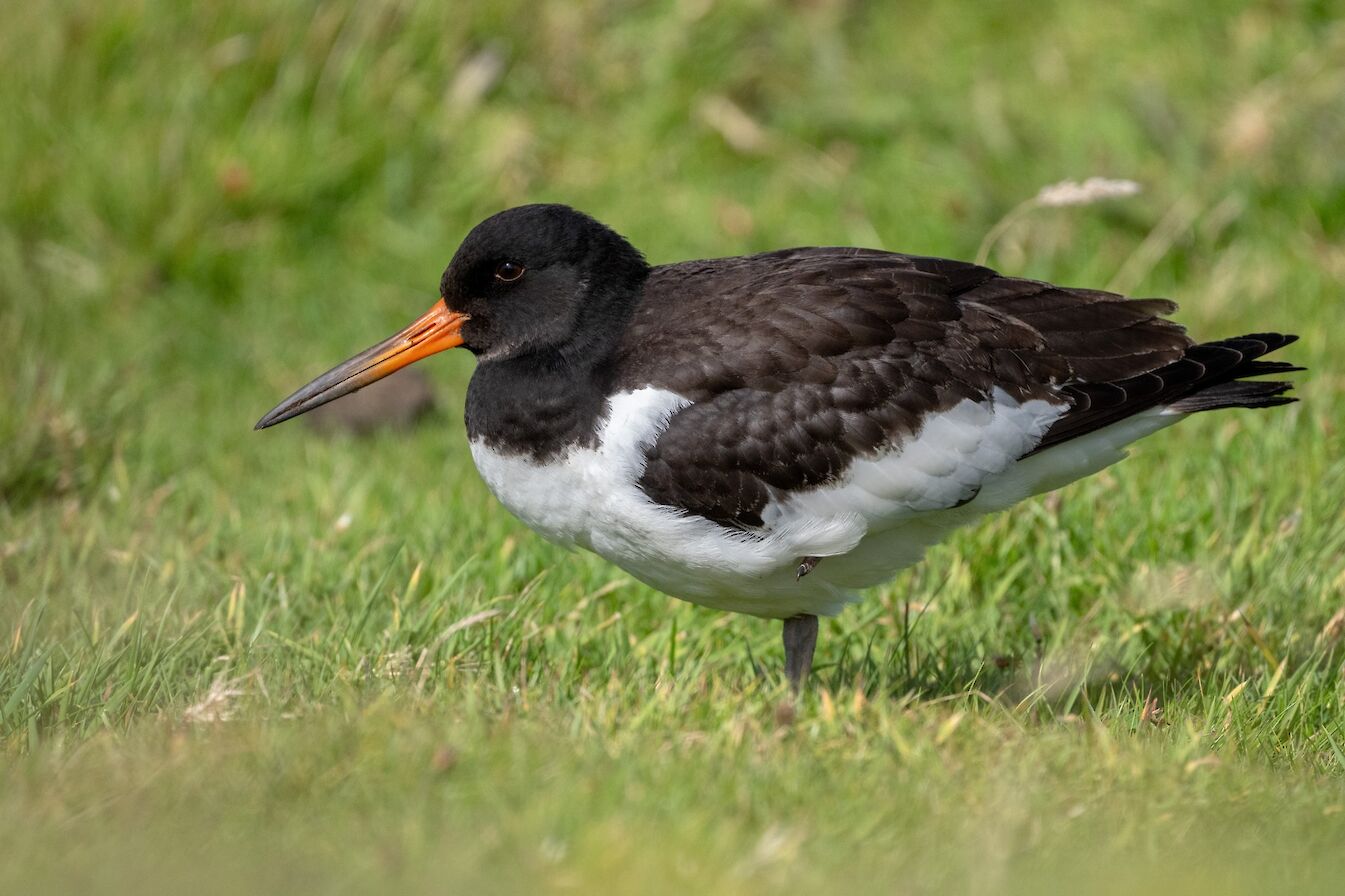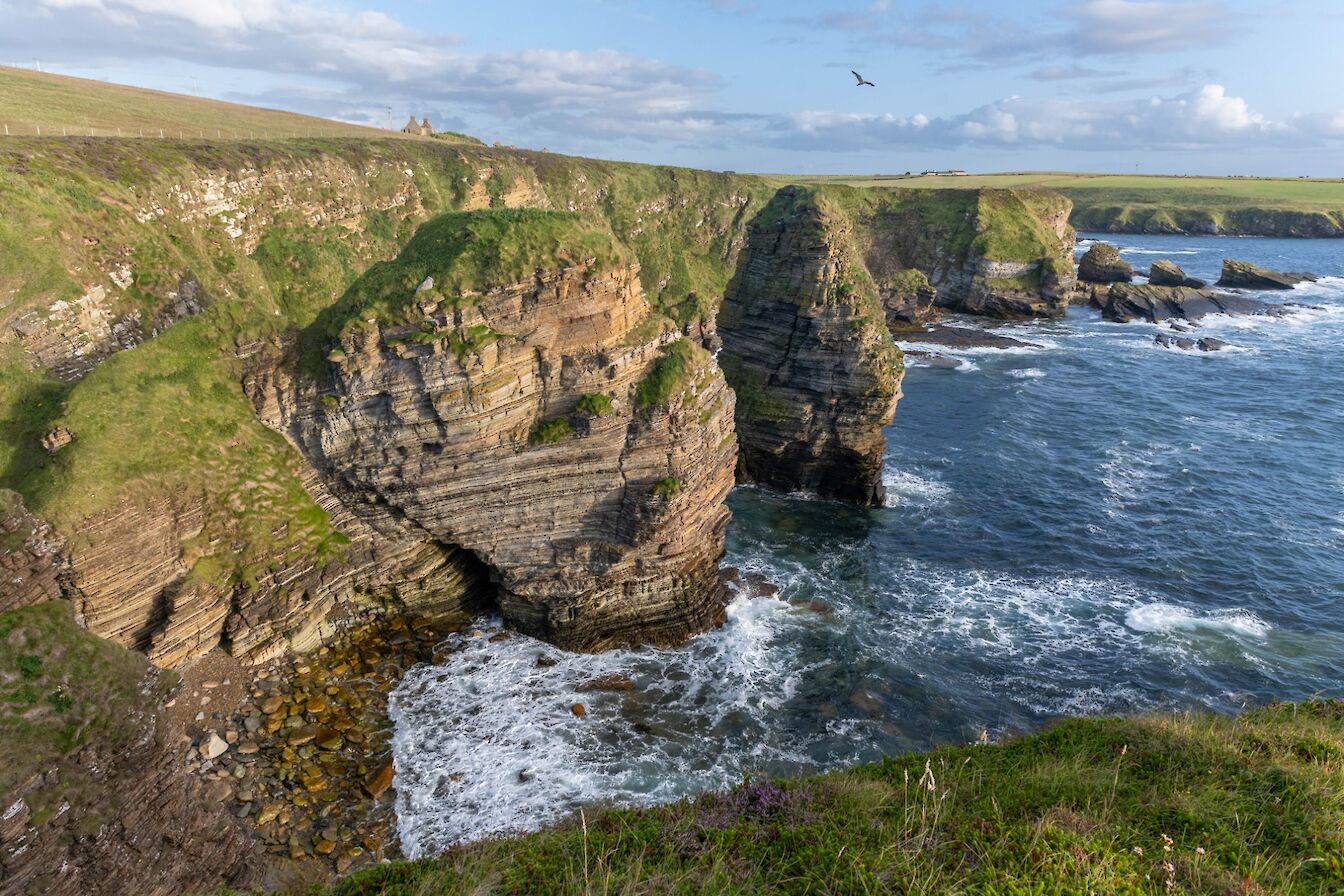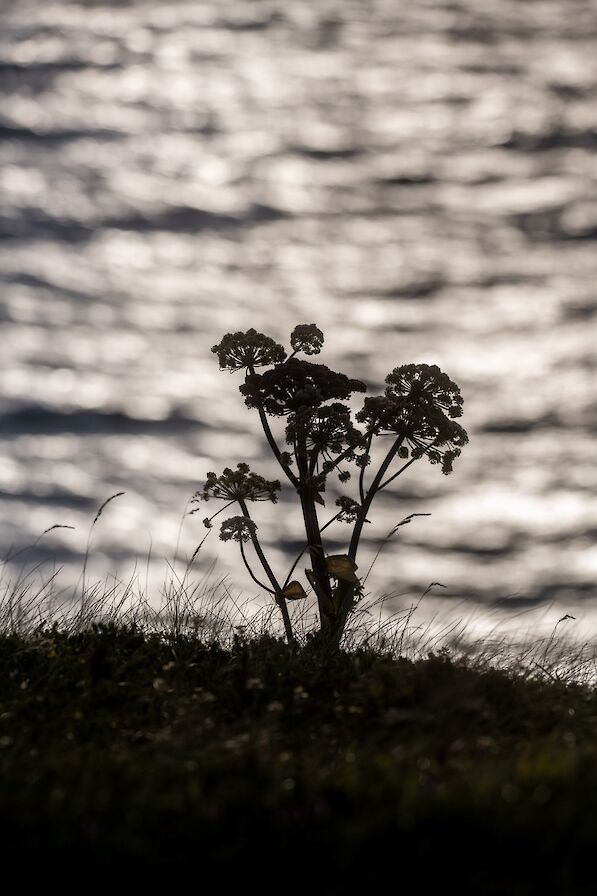September, is it late summer or early autumn? Either way it’s a slightly challenging ‘in between’ kind of month with regards wildlife watching.
For fungi enthusiasts it’s a good time of year and a large ‘fall’ of wheatear in the north isles recently reminded me, given the right conditions, the autumn migration can be especially exciting.
But I’ve set myself a challenge, one where I can’t really fail. That is unless the sea stacks I’m hoping to visit continue on their eroded path and collapse into the sea! I’m going to try and photograph three different sea stacks in a day. One at either end of the day I haven’t even visited before, The Standard, or Standard Rock, at Costa, and Stackabank in South Ronaldsay. In between I’ll also take in one that most visitors to Orkney will be familiar with, Yesnaby Castle.
Surely this weather forecast can’t be right? The sunshine and showers I believe, but 15mph winds from the south west, gusting 50mph? I wait in my car to allow a heavy shower to pass, cloud shadows fizzing over the hill opposite. Now it’s the 50mph gusts I believe and not the 15mph wind! I make my way up the hillside, flocks of sheep too busy nipping at the grass to pay me any attention and I start to wonder whether this is a good idea or not.
The gusts are really battering me and, not having been to this location before, I’m a little apprehensive. The air too feels weird, the wind is strong enough to make it feel cold and yet I’m occasionally hit with waves of warm, humid gusts. My route eventually catches up with the path and gate for the St Magnus Way, and I see two hardy souls have already taken this route, heads down into the wind, red waterproof hoods up, as they head towards the Brough of Birsay.
I too follow the path for a hundred metres or so and then, in awe, I’m stopped in my tracks. There below me standing imposingly in the Atlantic Ocean is The Standard, a jagged lump of a sea stack, the sun illuminating the creases on its weathered face. The sky behind is dark, a beautiful contrast to the swell now braking at the base of the rock.
I suddenly feel like I shouldn’t be here, that it’s somehow too wild a place and that I’m imposing. I see some bumps and crags in the landscape further round that should get me out of the wind and look a fine place for a flask of tea to admire this dramatic place.
To my surprise an oystercatcher is happily feeding here, probing into the soft earth. It too has found a spot out of the raging wind. This is a young bird, born this year but now the size of an adult. Its bill is still dark at the end and the feathers on its back not quite jet black but rather darker brown and I like to think it is fresh faced, its features softer somehow.
Now that I’m at the same level as the sea stack in front of me, I can’t stop looking at it. The hills of Rousay show themselves and bring a nice depth to the image. Fulmars, the supreme masters of the updrafts, swirl around the stack. My apprehension gone I now want to sit all day here, but with a long schedule ahead I pack away my flask and make my way back to the car.
As I drive anti-clockwise towards Yesnaby I know I’m going to be distracted as I come over the hill, with the Bay of Skaill stretching out before me.
The sea isn’t huge but big enough for the waves hitting the Hole o’Row to be illuminated by the strong sunshine. I can’t resist and make my way out to my favourite spot, watching as the headland transforms the energy of the swell into fine waves of spray. Eider ducks have gathered in the swell breaking on the shore, an odd rag tag bunch of moulting birds.
Now I’ve made it to the Yesnaby car park but the Castle itself can’t be viewed until you are almost upon it. The wind hasn’t abated and if anything feels like it’s even gone up a notch. Yesnaby Castle stands at 115-feet-tall but today it is being outdone by the sight of a burn being blown back from where it came by the ferocious wind. As the water falls off the cliff it seems to almost bounce and bubble, a huge streak of white water curving back towards the land.
This isn’t going to be an easy photograph to take. I stand as close as I dare and rattle off a series of images. Easy enough you might think, but occasionally the wind swirls around and I’m left with a water-spattered lens. I remind myself to clean it with warm water when I get home. Nikon cameras have always had good weather sealing, and I’m hoping this one, a Z8, is the same. Still, it pays to look after your gear and a rub with a warm, damp cloth will do the trick.
I admire a lone gannet making its way south into the wind before heading back to Kirkwall for my tea (or dinner, but that’s a whole different article!). I check the forecast once more before making my way across the barriers to South Ronaldsay and another piece of coast I haven’t explored before. As I walk north from Burwick I peer down into the geos or coves that will soon host our wonderful grey seals who will come ashore to give birth. It’s one of my favourite times in Orkney’s natural calendar, but for now I’ve got a fair old walk around the coast in order to get to my next sea stack, Stackabank.
It's the smallest sea stack of the day but in some ways looks the most imposing. Not in size, though, but the light is harsh and so with the sun placed directly behind it, it is nothing more than a silhouette. The forecast is for full sunshine towards sunset so I’m optimistic about creating a really atmospheric image - one where the sea stack is silhouetted but the sky is a vibrant orange.
Sunset is still some time away though so I explore a little. The soft springy heather is in good colour but this feels very much like the beginning of the end of summer. The sea pinks or thrift have lost their heads and instead look like dried star anise. The Angelica too is a reminder of the time of year. I find a spot in the soft undergrowth and wait for the sun to fall.
The swell here is as wild as Yesnaby despite being in the relatively shelter of Scapa Flow, and it breaks itself on the sooty dark rock of Stackabank.
As I wait, I realise this isn’t going to be the sunset I had hoped for, a thick bank of cloud sits on the horizon, slowly engulfing the Hoy hills to the west. I feel myself getting cold too and as a curlew calls behind me, I reflect on what a day it’s been, each location no less special than the others.
My mind wanders back to those seals and the drama that awaits them in the months ahead. I can’t wait to watch it.
Raymond is a wildlife filmmaker who also offers bespoke Orkney wildlife tours and one-to-one wildlife photography tuition. Find out more via his official website. You can also find him on Facebook, Twitter and Instagram.






